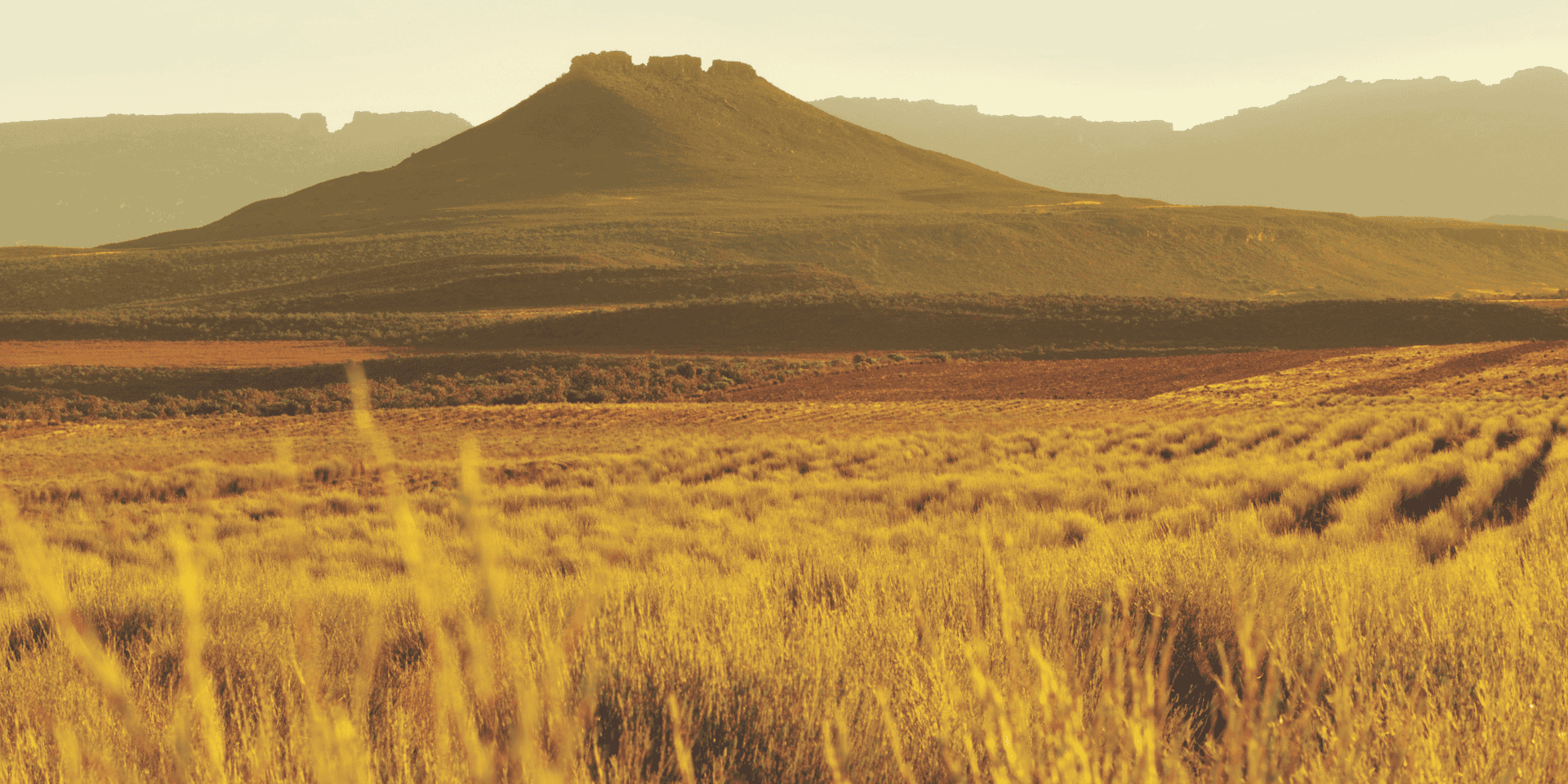
Blog
What is rooibos tea?

The wonder plant from Africa
 Strictly speaking rooibos is not a tea but a herbal infusion, or tisane (pronounced tee-zan). It’s a staple in South African homes and is becoming increasingly popular globally. People love the fact that it’s calming, caffeine-free and rich in antioxidants, and they can’t get enough of its inherently sweet and earthy taste.
Strictly speaking rooibos is not a tea but a herbal infusion, or tisane (pronounced tee-zan). It’s a staple in South African homes and is becoming increasingly popular globally. People love the fact that it’s calming, caffeine-free and rich in antioxidants, and they can’t get enough of its inherently sweet and earthy taste.
The tisane (tea) itself comes from a plant called rooibos (scientific name: Aspalathus linearis), a shrubby legume that grows only in the mountainous Cederberg region of the Western Cape of South Africa, and nowhere else in world.


How it got its name
Over 300 years ago, the San – a nomadic tribe who roamed the Cederberg in search of food, water and shelter, and whose history is forever etched in rock art found in the area’s many caves – were the first to discover the delicious, healing tea made from the rooibos plant. They cut the plant’s fine, needle-like leaves, bruised them with wooden mallets and left them to dry in the sun. When cut and fermented, the green leaves of the rooibos plant turn a rich orangey-red colour. It is this distinctive colour which led to the Afrikaans name ‘rooibos’, meaning ‘red bush’.

 Indigenous to the Cederberg
Indigenous to the Cederberg
Rooibos grows in one place and one place only: the Cederberg Mountains in South Africa’s Western Cape province. Four hours (approximately 250-kilometres / 155 miles) north of Cape Town and spanning a radius of 110-kilometres (approximately 60 miles), the Cederberg forms part of The Cape Floristic Region: the smallest but richest of only six floral kingdoms in the world. The converging currents of the Indian and Atlantic Oceans, which meet at the tip of Africa, render this area an environmentally unique and highly biodiverse region with myriad plant species, including rooibos, growing here and nowhere else.
The area takes its name from the Clanwilliam Cedar tree which once forested the area but is now in danger of extinction. The Cederberg is world-renowned for its extraordinary rock formations (the world’s leading rock climbers love it), ancient San rock art and the staggering cornucopia of wild flowers that blankets the region every year to herald the start of spring (some have called it the greatest show on earth).

The rooibos plant
The rooibos plant grows up to 1.5m (5ft) in height. Its thin branches carry bright green, waxy, needle-like leaves, and small yellow flowers in spring. A sturdy plant, rooibos has adapted to the region’s coarse, rocky soil and hot, dry summers. In addition to a network of roots just below the soil surface, it has a long taproot that grows as deep as 3m (10 ft) and enables the plant to access subterranean moisture throughout the harsh Summer months.

Altitude, soil chemistry, microclimates and surrounding vegetation all affect and contribute to the quality of rooibos harvested. Growing the plant as close to nature as possible helps rooibos to retain its genetic integrity and result in superior quality rooibos that delivers on ultimate taste, colour, and aroma.
Harvesting
The rooibos harvest takes place in the summer (January thru March in South Africa) and begins just after the first summer rains. The plants are cut to about 30 cm (1 foot) from the ground at harvest time and begin another major growth cycle the following spring.

Cutting
The entire plant (stems, twigs, leaves and all) is put through a specialised cutting machine which shoots short segments of green rooibos into a large trailer bin. The rooibos is then processed in one of two ways, to produce two different types of tea. The green leaves and stems are either immediately dried to prevent oxidation (this gives you green rooibos) or fermented which turns them the red colour of traditional rooibos.
 Fermentation
Fermentation
To begin fermentation the cut rooibos is tipped onto a tea drying court and laid in a long, shallow heap down its centre. The heap is then watered and left to dry in the 40°C (104°F) summer heat.
Once watered, heat builds up in the rooibos heap, forcing a light fermentation process. Almost instantly, the leaves transform in colour from bright green to a dark red-brown.
The heap is steam-rolled three times – squeezing moisture from the tea – and then left to sweat overnight.

The next morning the tea is sprayed out over the tea court and left to dry for a few hours. Once the rooibos is completely dry, it is collected in bags and sent to be steam sterilized.

 A herbal tea for all occasions
A herbal tea for all occasions
Traditionally rooibos is put in teabags or sold in loose-leaf form. The soothing reddish brew is delicious with or without milk, and many people add a dash of honey or a slice of lemon. It is naturally sweet and low in tannin and, being naturally caffeine-free, can be enjoyed throughout the day and night.
Since 2005, red espresso has pioneered a tastier, even healthier way of experiencing South Africa’s best-loved beverage. By grinding the plant to a powdery consistency and extracting it under pressure, red espresso has created an uber-healthy herbal tea that acts and drinks like coffee and is packed to the rafters with antioxidants. Red espresso’s signature red cappuccino has won many international awards as a naturally caffeine-free alternative to coffee. Find it in good cafés and retailers, worldwide.

red espresso – the world’s first rooibos tea espresso.

